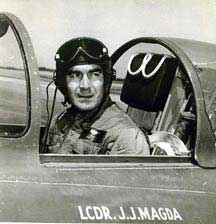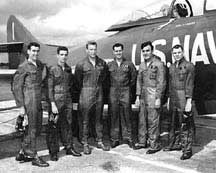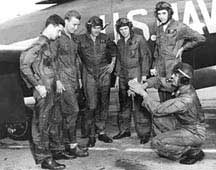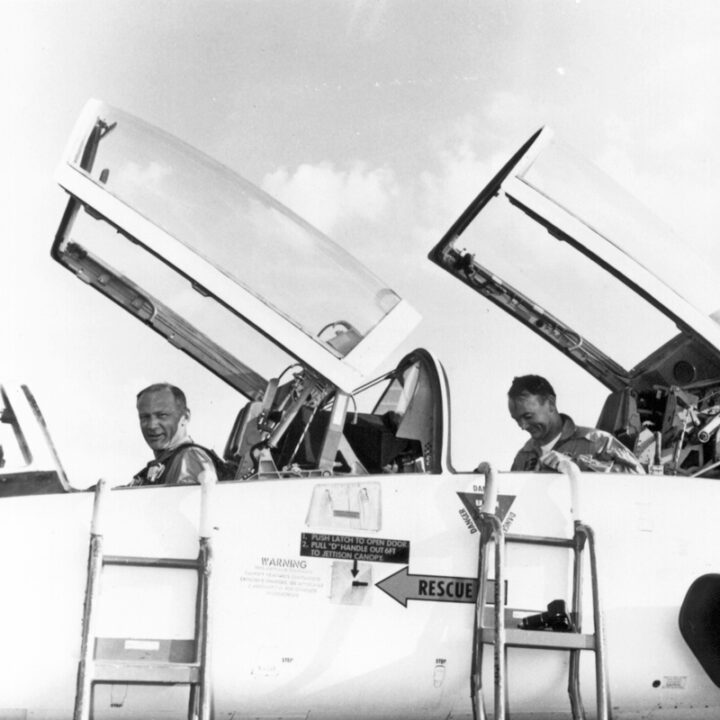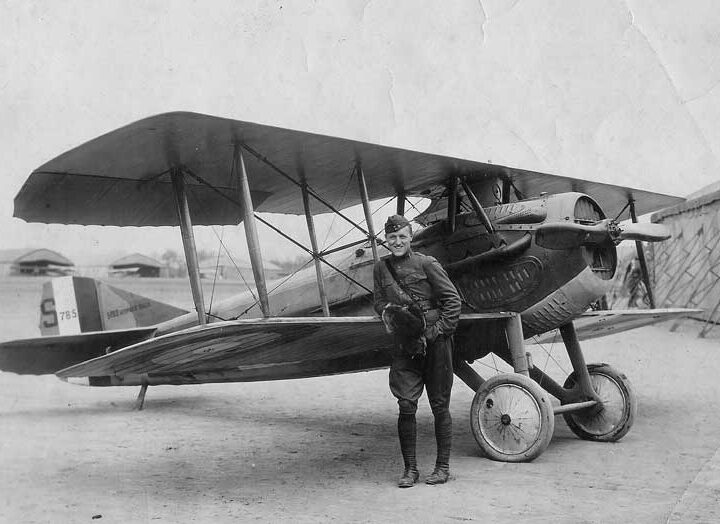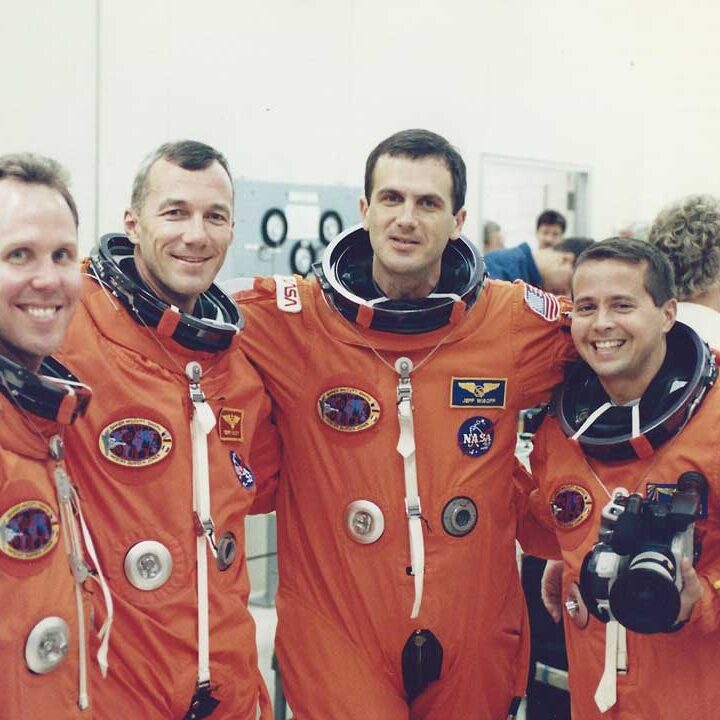John Joseph Magda, Jr. was born in Camp Taylor, Kentucky, on July 23, 1918. He was captain of the football team at Okalona High School and was a football and baseball star at Western Kentucky State Teachers’ College from which he graduated in 1940. Both of his parents came to this country in 1904 from Hungary.
After graduating from Western, he enlisted in the U.S. Navy, September 26, 1940 and was appointed an aviation cadet in January, 1941. He completed flight training at the Naval Air Station, Pensacola, Florida and was commissioned Ensign June 21, 1941.
In August, 1941, he was assigned to Fighter Squadron Eight, based on the famed aircraft carrier the USS Hornet. In June, 1942, during the famous Battle of Midway, his plane ran out of fuel and had to be ditched in the Pacific Ocean. He and another flyer spent five days in a rubber life raft before being rescued.
In March, 1943, he was assigned to the carrier USS Saratoga in the Pacific and while serving there was awarded the Distinguished Flying Cross, the Air Medal and two Gold Stars in lieu of the Second and Third Air Medals, for heroism and extraordinary achievement as Pilot and Leader of a Fighter Plane Division. He was an Ace at age 23, credited with shooting down five Japanese aircraft and destroying at least seven on the ground.
Magda returned to the United States in 1944 and was promoted to Lieutenant Commander on October 3, 1945. In March, 1948, he served as a member of the first jet squadron to operate on board an aircraft carrier (the USS Boxer).
In September, 1949, he was assigned to fly with the “Blue Angels”, the navy’s flight exhibition team and he became their Commander in January, 1950.
With the outbreak of the Korean War, Magda and his Blue Angel teammates were assigned to the USS Princeton, where he commanded VF-191, a jet fighter squadron operating in the Korean area.
On March 9, 1951, Lieutenant Commander Magda, as strike leader, was pressing home a rocket and strafing attack against enemy North Korean and Chinese Communist installations at Tanchon, Korea when his jet was hit and burst into flames. He headed his plane toward the sea where it crashed, costing him his life. He was posthumously awarded the Navy Cross for extraordinary heroism. He was survived by his wife and two children – He was 33.
His military awards include the Navy Cross; Distinguished Flying Cross; the Air Medal with two Gold Stars; the Purple Heart; the American Defense Service Medal; the American Campaign Medal; the Asiatic-Pacific Campaign Medal; the World War II Victory Medal; the National Defense Service Medal; the Korean Service Medal; and the United Nations Service Medal.
On November 3rd LCDR Johnny Magda was inducted into the Aviation Hall of Fame in Lexington, Kentucky. BA coordinator for the event was Dan Cherry USAF (Ret) and former flight leader of the Thunderbirds. At the induction ceremony, it was announced that Aviation Heritage Park had just obtained the rights to a F9F Panther which will be displayed alongside the Phantom. The plane was located and made available through the efforts of Bob Rasmussen. It will be painted in the Blue Angel scheme of the time with Boss Magda’s name on it. Dan also presented Dale Magda, son of Johnny Magda, with an oil painting of Magda’s Panther. The painting will be displayed in a Johnny Magda exhibit at Western Kentucky University.
Read daughter Marnie Magda’s Speech from her father John Magda’s induction into the Kentucky Aviation Hall of Fame here.

